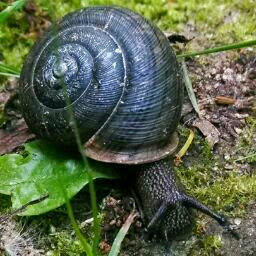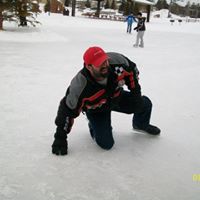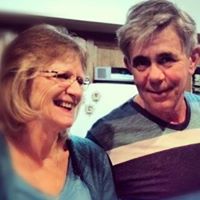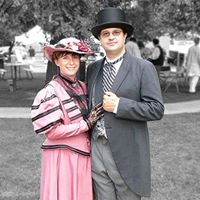Gary J Fischer
from Los Lunas, NM
Gary Fischer Phones & Addresses
- Los Lunas, NM
- Albuquerque, NM
- Hiawassee, GA
- Spring Hill, FL
- Arvada, CO
- Bradenton, FL
Work
-
Company:University Pttsbrgh Gnr/Int Med
-
Address:3459 5Th Ave Suite 9S, Pittsburgh, PA 15213
-
Phones:4126924888
Education
-
School / High School:Harvard Medical School1990
Languages
English
Awards
Healthgrades Honor Roll
Ranks
-
Certificate:Internal Medicine, 2013
Specialities
Internal Medicine
Medicine Doctors

Dr. Gary Fischer, Pittsburgh PA - MD (Doctor of Medicine)
view sourceSpecialties:
Internal Medicine
Address:
University Pttsbrgh Gnr/Int Med
3459 5Th Ave Suite 9S, Pittsburgh, PA 15213
4126924888 (Phone)
3459 5Th Ave Suite 9S, Pittsburgh, PA 15213
4126924888 (Phone)
Certifications:
Internal Medicine, 2013
Awards:
Healthgrades Honor Roll
Languages:
English
Hospitals:
University Pttsbrgh Gnr/Int Med
3459 5Th Ave Suite 9S, Pittsburgh, PA 15213
Presbyterian Hospital
1100 Central Avenue South East, Albuquerque, NM 87106
3459 5Th Ave Suite 9S, Pittsburgh, PA 15213
Presbyterian Hospital
1100 Central Avenue South East, Albuquerque, NM 87106
Education:
Medical School
Harvard Medical School
Graduated: 1990
Medical School
Massachusetts General Hospital
Graduated: 1990
Medical School
U Pitts
Graduated: 1990
Harvard Medical School
Graduated: 1990
Medical School
Massachusetts General Hospital
Graduated: 1990
Medical School
U Pitts
Graduated: 1990

Gary H. Fischer
view sourceSpecialties:
Family Medicine
Work:
Richmond Hill Family Practice & Urgent Care
10200 Frd Ave STE 101, Richmond Hill, GA 31324
9124596446 (phone), 9124455781 (fax)
10200 Frd Ave STE 101, Richmond Hill, GA 31324
9124596446 (phone), 9124455781 (fax)
Education:
Medical School
Wright State University Boonshoft School of Medicine
Graduated: 1987
Wright State University Boonshoft School of Medicine
Graduated: 1987
Procedures:
Allergen Immunotherapy
Arthrocentesis
Destruction of Benign/Premalignant Skin Lesions
Electrocardiogram (EKG or ECG)
Hearing Evaluation
Nutrition Therapy
Pulmonary Function Tests
Skin Tags Removal
Vaccine Administration
Arthrocentesis
Destruction of Benign/Premalignant Skin Lesions
Electrocardiogram (EKG or ECG)
Hearing Evaluation
Nutrition Therapy
Pulmonary Function Tests
Skin Tags Removal
Vaccine Administration
Conditions:
Abnormal Vaginal Bleeding
Allergic Rhinitis
Anxiety Phobic Disorders
Atherosclerosis
Atopic Dermatitis
Allergic Rhinitis
Anxiety Phobic Disorders
Atherosclerosis
Atopic Dermatitis
Languages:
English
Description:
Dr. Fischer graduated from the Wright State University Boonshoft School of Medicine in 1987. He works in Richmond Hill, GA and specializes in Family Medicine. Dr. Fischer is affiliated with St Josephs Hospital.

Gary S. Fischer
view sourceSpecialties:
Internal Medicine
Work:
University Pittsburgh General & Internal Medicine
3459 5 Ave STE 9S, Pittsburgh, PA 15213
4126924888 (phone), 4126924499 (fax)
3459 5 Ave STE 9S, Pittsburgh, PA 15213
4126924888 (phone), 4126924499 (fax)
Education:
Medical School
Harvard Medical School
Graduated: 1990
Harvard Medical School
Graduated: 1990
Procedures:
Arthrocentesis
Vaccine Administration
Vaccine Administration
Conditions:
Hypertension (HTN)
Acute Bronchitis
Acute Sinusitis
Acute Upper Respiratory Tract Infections
Alzheimer's Disease
Acute Bronchitis
Acute Sinusitis
Acute Upper Respiratory Tract Infections
Alzheimer's Disease
Languages:
English
Spanish
Spanish
Description:
Dr. Fischer graduated from the Harvard Medical School in 1990. He works in Pittsburgh, PA and specializes in Internal Medicine.

Gary J. Fischer
view sourceSpecialties:
Diagnostic Radiology
Work:
Greensboro Imaging
301 E Wendover Ave STE 100, Greensboro, NC 27401
3364335000 (phone), 3364335111 (fax)
301 E Wendover Ave STE 100, Greensboro, NC 27401
3364335000 (phone), 3364335111 (fax)
Education:
Medical School
University of Missouri, Columbia School of Medicine
Graduated: 1972
University of Missouri, Columbia School of Medicine
Graduated: 1972
Languages:
English
Description:
Dr. Fischer graduated from the University of Missouri, Columbia School of Medicine in 1972. He works in Greensboro, NC and specializes in Diagnostic Radiology. Dr. Fischer is affiliated with Womens Hospital.
Name / Title
Company / Classification
Phones & Addresses
Megacopier.com
Office Furniture & Equipment
Office Furniture & Equipment
117 S Cook St, Unit 234, Barrington, IL 60010-4311
Us Patents
-
Low Energy High Pressure Miniature Screw Valve
view source -
US Patent:7147205, Dec 12, 2006
-
Filed:Jun 16, 2004
-
Appl. No.:10/870755
-
Inventors:Gary J. Fischer - Sandia Park NM, US
Barry L. Spletzer - Albuquerque NM, US -
Assignee:Sandia Corporation - Albuquerque NM
-
International Classification:F16K 31/02
-
US Classification:25112911, 251331
-
Abstract:A low energy high pressure screw valve having a valve body having an upper portion and a lower portion, said lower portion of said valve body defining an inlet flow passage and an outlet flow passage traversing said valve body to a valve seat, said upper portion of said valve body defining a cavity at said valve seat, a diaphragm restricting flow between said upper portion of said valve body and said lower portion, said diaphragm capable of engaging said valve seat to restrict fluid communication between said inlet passage and said outlet passage, a plunger within said cavity supporting said diaphragm, said plunger being capable of engaging said diaphragm with said valve seat at said inlet and outlet fluid passages, said plunger being in point contact with a drive screw having threads engaged with opposing threads within said upper portion of said valve body such engagement allowing motion of said drive screw within said valve body.
-
Combustion Powered Linear Actuator
view source -
US Patent:7263955, Sep 4, 2007
-
Filed:Aug 31, 2006
-
Appl. No.:11/513728
-
Inventors:Gary J. Fischer - Albuquerque NM, US
-
Assignee:Sandra Corporation - Albuquerque NM
-
International Classification:F02B 71/00
F02B 71/04 -
US Classification:123 46R, 123 46 SC
-
Abstract:The present invention provides robotic vehicles having wheeled and hopping mobilities that are capable of traversing (e. g. by hopping over) obstacles that are large in size relative to the robot and, are capable of operation in unpredictable terrain over long range. The present invention further provides combustion powered linear actuators, which can include latching mechanisms to facilitate pressurized fueling of the actuators, as can be used to provide wheeled vehicles with a hopping mobility.
-
Wheeled Hopping Robot
view source -
US Patent:7775305, Aug 17, 2010
-
Filed:Aug 31, 2006
-
Appl. No.:11/513717
-
Inventors:Gary J. Fischer - Albuquerque NM, US
-
Assignee:Sandia Corporation - Albuquerque NM
-
International Classification:B62D 51/06
-
US Classification:180 81, 180 82, 123 46 R, 123 46 SC
-
Abstract:The present invention provides robotic vehicles having wheeled and hopping mobilities that are capable of traversing (e. g. by hopping over) obstacles that are large in size relative to the robot and, are capable of operation in unpredictable terrain over long range. The present invention further provides combustion powered linear actuators, which can include latching mechanisms to facilitate pressurized fueling of the actuators, as can be used to provide wheeled vehicles with a hopping mobility.
-
Steerable Vertical To Horizontal Energy Transducer For Mobile Robots
view source -
US Patent:6308791, Oct 30, 2001
-
Filed:May 6, 1999
-
Appl. No.:9/306674
-
Inventors:Barry L. Spletzer - Albuquerque NM
Gary J. Fischer - Albuquerque NM
John T. Feddema - Albuquerque NM -
Assignee:Sandia Corporation - Albuquerque NM
-
International Classification:B62D 5702
-
US Classification:180 81
-
Abstract:The present invention provides a steerable vertical to horizontal energy transducer for mobile robots that less complex and requires less power than two degree of freedom tilt mechanisms. The present invention comprises an end effector that, when mounted with a hopping actuator, translates along axis (typically vertical) actuation into combined vertical and horizontal motion. The end effector, or foot, mounts with an end of the actuator that moves toward the support surface (typically a floor or the earth). The foot is shaped so that the first contact with the support surface is off the axis of the actuator. Off-axis contact with the support surface generates an on-axis force (typically resulting in vertical motion) and a moment orthogonal to the axis. The moment initiates a horizontal tumbling motion, and tilts the actuator so that its axis is oriented with a horizontal component and continued actuation generates both vertical and horizontal force.
-
Hopping Robot
view source -
US Patent:62475460, Jun 19, 2001
-
Filed:May 6, 1999
-
Appl. No.:9/306673
-
Inventors:Barry L. Spletzer - Albuquerque NM
Gary J. Fischer - Albuquerque NM
Lisa C. Marron - Albuquerque NM
Michael A. Martinez - Albuquerque NM
Michael A. Kuehl - Albuquerque NM
John T. Feddema - Albuquerque NM -
Assignee:Sandia Corporation - Albuquerque NM
-
International Classification:B62D 5106
-
US Classification:180 85
-
Abstract:The present invention provides a hopping robot that includes a misfire tolerant linear actuator suitable for long trips, low energy steering and control, reliable low energy righting, miniature low energy fuel control. The present invention provides a robot with hopping mobility, capable of traversing obstacles significant in size relative to the robot and capable of operation on unpredictable terrain over long range. The present invention further provides a hopping robot with misfire-tolerant combustion actuation, and with combustion actuation suitable for use in oxygen-poor environments.
-
Passive Orientation Apparatus
view source -
US Patent:6286386, Sep 11, 2001
-
Filed:May 6, 1999
-
Appl. No.:9/306676
-
Inventors:Barry L. Spletzer - Albuquerque NM
Gary J. Fischer - Albuquerque NM
Michael A. Martinez - Albuquerque NM -
Assignee:Sandia Corporation - Albuquerque NM
-
International Classification:F16M 1100
B25J 500
B62D 5700 -
US Classification:7449001
-
Abstract:An apparatus that can return a payload to a known orientation after unknown motion, without requiring external power or complex mechanical systems. The apparatus comprises a faceted cage that causes the system to rest in a stable position and orientation after arbitrary motion. A gimbal is mounted with the faceted cage and holds the payload, allowing the payload to move relative to the stable faceted cage. The payload is thereby placed in a known orientation by the interaction of gravity with the geometry of the faceted cage, the mass of the system, and the motion of the payload and gimbal. No additional energy, control, or mechanical actuation is required. The apparatus is suitable for use in applications requiring positioning of a payload to a known orientation after arbitrary or uncontrolled motion, including remote sensing and mobile robot applications.
-
Misfire Tolerant Combustion-Powered Actuation
view source -
US Patent:63280027, Dec 11, 2001
-
Filed:May 6, 1999
-
Appl. No.:9/307264
-
Inventors:Barry L. Spletzer - Albuquerque NM
Gary J. Fischer - Albuquerque NM
Lisa C. Marron - Albuquerque NM
Michael A. Kuehl - Albuquerque NM -
Assignee:Sandia Corporation - Albuquerque NM
-
International Classification:F02B 7100
-
US Classification:123 46H
-
Abstract:The present invention provides a combustion-powered actuator that is suitable for intermittent actuation, that is suitable for use with atmospheric pressure carburetion, and that requires little electrical energy input. The present invention uses energy from expansion of pressurized fuel to effectively purge a combustion chamber, and to achieve atmospheric pressure carburetion. Each purge-fill-power cycle can be independent, allowing the actuator to readily tolerate misfires. The present invention is suitable for use with linear and rotary operation combustion chambers, and is suitable for use in a wide variety of applications.
-
Miniature Electrically Operated Diaphragm Valve
view source -
US Patent:63282798, Dec 11, 2001
-
Filed:Jan 31, 2000
-
Appl. No.:9/495408
-
Inventors:Douglas R. Adkins - Albuquerque NM
Barry L. Spletzer - Albuquerque NM
Chungnin C. Wong - Albuquerque NM
Gregory C. Frye-Mason - Cedar Crest NM
Gary J. Fischer - Albuquerque NM
Peter J. Hesketh - Atlanta GA -
Assignee:Sandia Corporation - Albuquerque NM
-
International Classification:F16K 3106
-
US Classification:25112907
-
Abstract:The present invention provides a miniature electrically operated valve that can stand off significant pressures, that can be inexpensively produced, and that can be made to operate without continuous electrical power. A valve according to the present invention comprises a housing and a beam mounted with the housing. A diaphragm mounted with the housing forms a sealed fluid volume. An electromagnetic energy source, such as an electromagnetic coil, mounts with the housing and when energized urges the beam in one direction. The beam can be urged in the opposing direction by passive means or by reversing the polarity of the electromagnetic energy source or by a second electromagnetic energy source. Two fluid ports mount with the housing. A first fluid port mounts so that, as the beam is urged in one direction or the opposite, the beam urges the diaphragm to move between engaging and substantially sealing the fluid port and disengaging and not substantially sealing the fluid port.
License Records
Gary S Fischer
License #:
MT032554T - Expired
Category:
Medicine
Type:
Graduate Medical Trainee
Classmates

Gary Fischer
view sourceSchools:
Columbus East High School Columbus IN 1970-1974
Community:
Michael Bullington

Gary Fischer (Fischer Mot...
view sourceSchools:
Peckham Junior High School Milwaukee WI 1950-1953
Community:
Lisa Haidinyak, Barb Treu

Gary Fischer
view sourceSchools:
Leominster High School Leominster MA 1956-1960

Gary Fischer
view sourceSchools:
St. Alfred School Taylor MI 1979-1984
Community:
John Lesko, Larry Cataldo, Brian Price

Gary Fischer
view sourceSchools:
Englewood High School Jacksonville FL 1965-1969

Gary Fischer
view sourceSchools:
Lakeview Elementary School Lorain OH 1965-1972
Community:
Eugene Bond

Gary Fischer
view sourceSchools:
McGibney Elementary School Pittsburgh PA 1960-1967, Wallace Junior High School Pittsburgh PA 1967-1970
Community:
Eric Peterson, Thomas Drew
Flickr
Myspace
Googleplus

Gary Fischer

Gary Fischer

Gary Fischer

Gary Fischer

Gary Fischer

Gary Fischer

Gary Fischer

Gary Fischer

Gary Fischer
view source
Gary Fischer
view source
Gary Fischer
view source
Gary Fischer
view source
Gary Diane Fischer
view source
Gary Fischer
view source
Gary T. Fischer
view source
Gary Fischer
view sourcePlaxo

Gary Fischer
view source
GARY FISCHER
view sourceArkinetics
Youtube
Get Report for Gary J Fischer from Los Lunas, NM





















